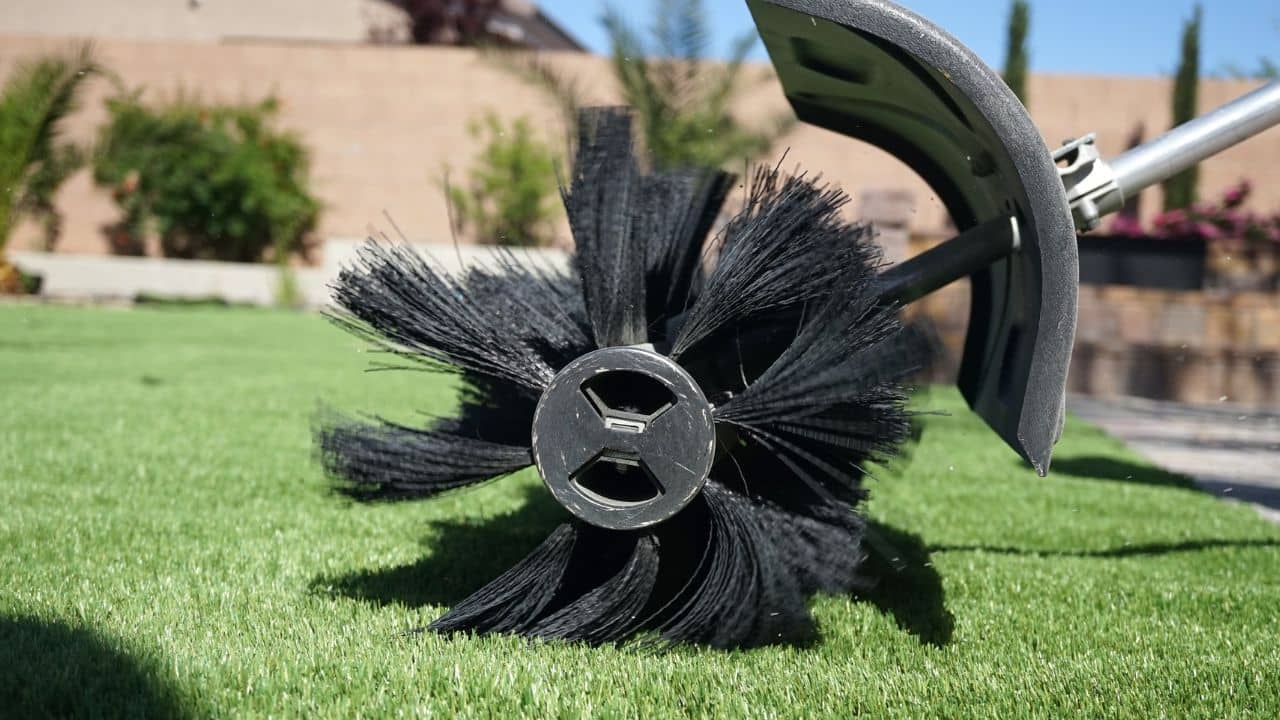4 Ways Fake Grass Makes Raising Pets Easier

If you’re a pet owner, chances are you’re well aware of how much of a pain it can be to keep a yard in good shape year-round. Our four-legged friends are great to have around, but they can make keeping the grass green and lush feel like an endless chore.
Luckily, there’s a solution to this dilemma: artificial grass.
Fake grass is surprisingly practical for pet owners, and it can make caring for your yard much easier than you ever thought possible. Here are just some of the ways using fake grass as pet turf will help you raise pets more easily:
1. Easy Cleanup
Keeping a pet can be hard work—and it gets harder when you start noticing the stains and flecks of fur that are always around your house. If this sounds all too familiar, consider changing your flooring to synthetic grass.
As the days get longer and the sun shines brighter, you’ll appreciate how easy it is to clean up spilled water or a pile of dirt. Simply spray it with a hose, and you’ve got a sparkling clean yard.
2. No Lawn Pests
Lawns are a magnet for pests like fleas, ticks, and mosquitoes—and if you have pets, you already know they’re naturally going to attract those annoying critters.
Nothing ruins a nice day in the yard faster than having to worry about your fur babies bringing home unwanted guests. But with artificial turf, there’s no need to use the same chemical-laden sprays on your lawn that you would in order to keep real grass pest free.

3. No Holes and No Mud
No matter how hard you try to keep your pet from digging, you’ll probably find yourself dealing with a few holes in the yard. If you have a dog, it’s just in their nature to dig—they’re looking for a cool place to lie down or a toy that’s been buried. And if you have a cat, well, cats will be cats.
Instead of trying to train your pets out of these natural behaviors, you can simply integrate fake grass into your yard and stop worrying about those holes and mud puddles.
4. Fast Drainage
No one likes a soggy backyard. Wet grass can be slippery and difficult to walk on, and it also means that your pets are likely to track mud all over your house after they come inside. Fake green grass is different. It’s designed to drain liquids quickly, so no matter how much rain you get or how often your pets play in the sprinkler, your yard will never turn into a swamp. It’s easy to clean up—just hose it down and let it dry.
What To Consider Before Investing in Pet Turf
Now that you understand the upsides of installing pet turf on your property, you should know that not all artificial turf is created the same. Here are some aspects you need to consider to make sure you’re getting the best for yourself and your furry friend.
Quality of Infill
The infill layer is what goes beneath the fake grass and is just as important as the grass carpeting. Silica granules and crumb rubber are the main types of infill but as a pet owner, the former is a much better choice albeit a bit more costly.
Silica granules are more durable and can withstand hot temperatures. They also come with an antimicrobial coating that prevents bacteria in pet waste from spreading thus providing a safer environment for you and the family.
Pet Odor Protection
Pet owners with natural grass don’t have to clean up pet urine since it is absorbed by the soil. While people with artificial grass can clean up with a simple hose down, some of the pet urine doesn’t go away and over time, can lead to a bad odor in the yard.
Therefore, you should install pet turf with a turf deodorizer at the bottom layer to help neutralize potential odors.
Pet Turf Is The Way To Go
Synthetic grass is designed to be low-maintenance and easy to care for. It doesn’t require the same level of upkeep as real grass, which needs to be watered and mowed on a regular basis.
The only maintenance required with synthetic grass is an occasional hose-down to remove any dirt or debris that might get picked up. You can also use a special turf cleaner to keep your fake grass in tip-top shape.
Read Also: 11 Things You Should Do So That You Do Not Lose Your Dog



